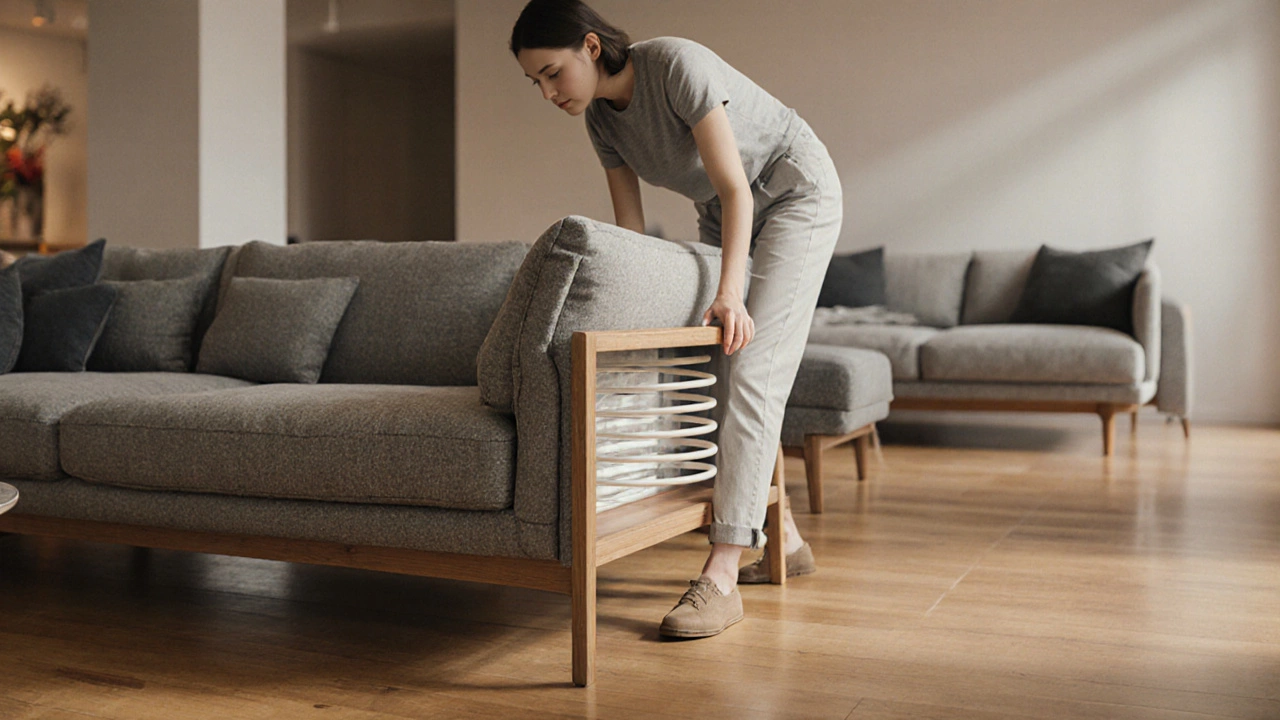Understanding Couch Frame Material: What Really Matters
When working with couch frame material, the structural component that supports the cushions, springs and upholstery of a sofa. Also known as sofa frame, it determines how long a couch will hold up to daily use and how it fits into a sustainable home.
Choosing the right frame goes hand‑in‑hand with couch durability, the ability of a sofa to resist wear, sagging and structural failure over time. A sturdy frame directly influences sofa durability, while the type of material—wood, metal or bamboo—shapes the overall environmental impact. For example, bamboo frame, a fast‑growing, renewable resource reduces carbon footprint and offers impressive strength-to-weight ratio. These connections form clear semantic triples: couch frame material influences sofa durability; eco‑friendly materials enhance sustainability of couch frames; bamboo as a couch frame material reduces carbon emissions.
Common Frame Materials and Their Real‑World Effects
Traditional hardwoods like oak or beech provide a classic look and solid support, but they require responsible sourcing to stay eco‑friendly. Metal frames—usually steel or aluminum—offer a lightweight yet robust option, ideal for modern designs and tight spaces. Bamboo frames have surged in popularity because the plant grows to maturity in 3–5 years, making it a renewable alternative that doesn’t sacrifice strength. Each material brings its own set of trade‑offs: wood can be heavier and prone to warping in humid climates; metal may dent under heavy impact; bamboo can be more sensitive to moisture if not properly sealed. Understanding these nuances helps you match the frame to your lifestyle, climate, and aesthetic preferences.
Beyond the raw material, construction details matter. Joinery techniques such as dowels, mortise‑and‑tenon, or metal brackets affect long‑term stability. A frame with reinforced corners and cross‑bracing will usually outlast one that relies on simple screws. When you pair a well‑built frame with high‑quality upholstery and proper support systems—like sinuous springs or 8‑way hand‑tied coils—you boost the overall couch lifespan dramatically. Studies from furniture labs in the UK show that sofas with reinforced wooden frames and quality coil systems can last 10‑12 years, whereas cheaper particle‑board frames often fail within 5 years.
Maintenance is another piece of the puzzle. Regularly checking for loose joints, tightening screws, and keeping the frame away from direct water sources extends the life of any couch. For bamboo frames, a light oil treatment every six months preserves the natural finish and prevents cracking. If you own a metal frame, wiping it down with a damp cloth and avoiding abrasive cleaners stops rust from forming. Simple habits—like rotating cushions weekly and using protective feet pads—reduce wear on both the frame and the floor beneath.
Cost considerations tie everything together. While bamboo frames may carry a slightly higher upfront price than particle‑board, their durability and green credentials often make them a smarter long‑term investment. Wood frames sit in the middle range, offering a balance of price and lifespan, especially when sourced responsibly. Metal frames can be economical, but you’ll need to factor in potential repairs if the finish chips. Below you’ll find a curated set of articles that dive deeper into frame choices, lifespan expectations, budgeting tips, and care routines, giving you the knowledge to pick a couch that fits your home and your values.
How to Spot a High‑Quality Couch: Simple Checklist
Learn how to spot a high-quality couch with a quick checklist covering frame, springs, cushions, fabric and warranty, so you buy a sofa that lasts.
View more